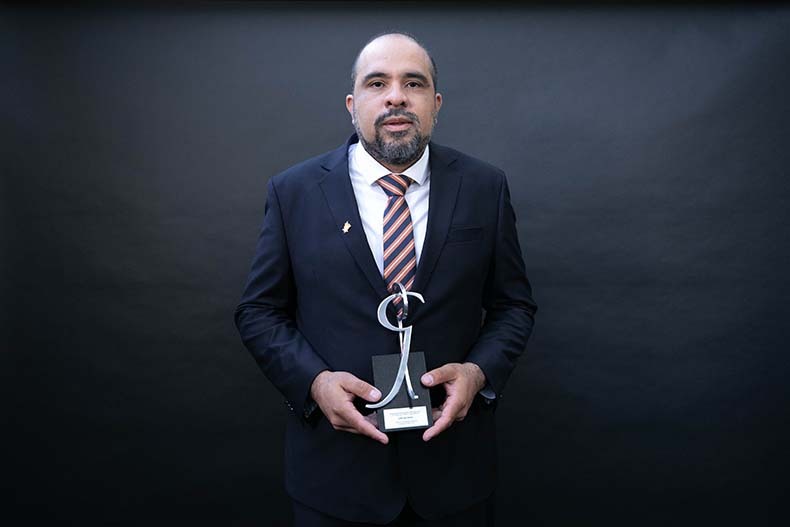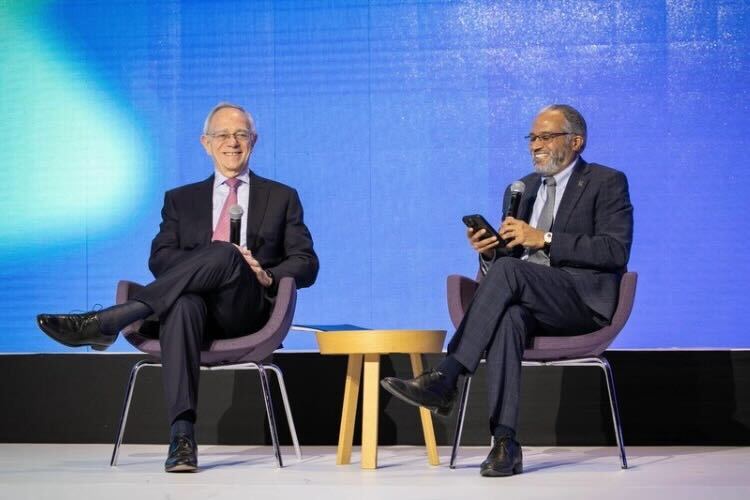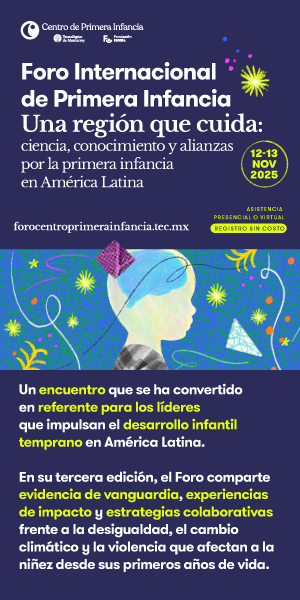Edgar Raygoza is leading the way in Mexico by creating lubricants for industrial machining generated from nanoadditives that are both eco-friendly and based on a technology that he began to develop during his doctoral studies at the Tec.
When Raygoza, who is also the founder of Global Nano Additives (GNA), began his graduate studies, he was already focused on creating a nanofluid that would improve its thermal properties without altering its electrical insulating properties. However, halfway through his doctorate, he switched the focus of his research to the automotive sector and applied his technology to motors.
“We began to test the first prototypes in very small workshops. Then, we moved up to bigger ones, until we got to the auto part suppliers. Finally, we reached the manufacturers themselves, such as John Deere,” says the business owner, who was one of the winners of the 2023 Rómulo Garza Award.
Currently, the nanoadditive technology developed by Raygoza is protected by patent applications in Mexico and the United States. What’s more, according to an article published in 2019 on the DNF website, Global Nano Additives (based in Monterrey, Nuevo León) has an office in China, where the company received funding from that country’s government.
Why is the Development of Nanoadditives Considered Pioneering in Mexico?
Besides withstanding extreme temperatures and reducing wear on machinery parts, the lubricants generated from Edgar Raygoza’s nanoadditves are the first eco-friendly ones in Mexico.
In case you’re wondering how they work, the expert explains that the heat generated during machining can negatively affect the efficiency of the process and the useful life of the tools, which is why it is crucial to have effective lubricants that help to control the temperature and reduce wear.
That’s why a crucial aspect of the nanoadditives developed by GNA is their capacity to improve heat dissipation while machining. In Raygoza’s process, the nanoparticles increase the fluid’s thermal conductivity, which enables better transfer of heat from the cutting area, thus reducing the temperature.
Not only does this improve the efficiency of the process, but it also helps to prevent overheating and premature wear: “All things considered, our customers end up reducing their consumption of lubricant, thus extending the life of their tools,” says the entrepreneur.

What Were the Biggest Obstacles he Faced in his Research?
Although Edgar Raygoza has already explained that improving the lubrication of machinery increases its longevity and efficiency, thus providing an environmental advantage, how was he able to develop the nanoparticles that enabled him to improve this process?
One of the main challenges Raygoza faced was synthesizing nanoparticles with the desired properties, as these have to be stable and uniformly dispersed throughout the fluid to avoid sedimentation.
This involves designing and optimizing synthesis processes that produce these elements with a suitable chemical composition and morphology.
Raygoza and his team were able to modify their surface, which enabled them to disperse throughout the fluid in a stable manner and maintain their improved properties during usage in industrial applications.
These nanoparticles form a protective layer between the cutting attachment and the piece being cut, reducing friction and wear on both. What’s more, their laminar morphology contributes to reducing friction by moving around each other, which extends the useful life and improves the quality of mechanical parts.
“We discovered a formula, an additive that we synthesized, as well as performing a modification to its surface. This enabled us to achieve long-term stability, which is an important challenge for the global scientific community,” says the business owner.
















